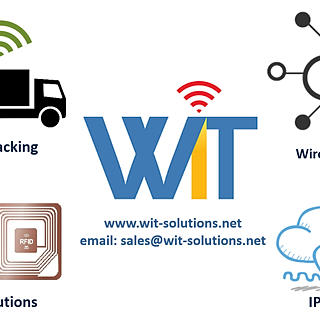How does VSLAM and LLM Enable Autonomous Robots?
- wit-tech
- Jul 19
- 3 min read
Visual SLAM (vSLAM) and Large Language Models (LLMs) serve very different but increasingly complementary roles in autonomous robotics. Here’s how they each contribute—and how they can work together—to enable more capable and intelligent autonomous robots.
🧠 The Roles of VSLAM and LLMs in Autonomous Robots
Technology | Primary Role | Type of Intelligence |
vSLAM | Perception & Navigation | Spatial & geometric |
LLMs (e.g., ChatGPT) | Reasoning, Planning, Natural Language Interaction | Semantic & contextual |
🚗 What Does vSLAM Do for Autonomous Robots?
Visual SLAM (vSLAM) enables a robot to:
Build a 3D map of its environment using cameras.
Estimate its own position within that map (localization).
Navigate in real time without relying on GPS.
This is crucial for:
Self-driving cars in urban environments.
Drones flying indoors or underground.
Warehouse robots navigating complex layouts.
Example:
A drone using vSLAM can fly through a forest, identify obstacles in real time, and build a map of the path it took—all using onboard cameras.
🧠 What Do LLMs Bring to Autonomous Robots?
Large Language Models help robots with:
Task understanding from human instructions (“Pick up the blue box next to the red chair.”)
Reasoning over high-level goals and making decisions based on context.
Dialogue & interaction, allowing robots to ask clarifying questions or explain their actions.
LLMs add semantic intelligence and human-like reasoning, which complements the spatial awareness provided by vSLAM.
🤝 How Do vSLAM and LLMs Work Together?
Here’s how combining vSLAM + LLM can make a robot truly autonomous and interactive:
1. Natural Language Navigation
LLM interprets: “Go to the kitchen and find the coffee machine.”
vSLAM helps the robot map the environment and localize itself as it moves.
The LLM can convert language to spatial goals: e.g., recognize that “kitchen” is a room in the map.
2. Context-Aware Scene Understanding
vSLAM builds a geometric map.
LLM + vision models (like CLIP or BLIP) annotate that map with semantic labels like “sofa,” “exit,” or “charging station.”
3. Autonomous Task Planning
User: “Clean the living room and then charge yourself.”
LLM breaks this into steps:
Identify the “living room” area from semantic map.
Plan path using vSLAM.
Detect when task is done, then find the charger.
4. Interactive Problem Solving
If the robot gets stuck or confused, LLM allows it to ask:
“I can’t find a clear path to the kitchen. Should I go around the hallway?”
🛠️ Real-World Examples
Tesla’s Optimus robot: Uses vision-based localization and planning, with models similar to LLMs for understanding tasks and environments.
Everyday Robots (by Google DeepMind): Combine vSLAM, vision-language models, and LLMs to perform chores like sorting trash or setting tables.
OpenVLA (Open Vocabulary Language-based Action): Uses LLMs to describe and execute tasks in real-world scenes using language and perception.

witzense.com AI service robots for commercial use
⚠️ Challenges of Integration
Latency: LLMs are often cloud-based, while vSLAM requires fast, local decisions.
Alignment: Making sure what the LLM “understands” matches what the robot’s sensors perceive.
Safety: LLMs can be unpredictable—safeguards are needed for real-world robotics.
🔮 The Future: Embodied AI
The fusion of vSLAM and LLMs is a big step toward Embodied AI—robots that can understand, interact, and adapt like humans. Soon, we’ll have robots that:
Understand ambiguous or imprecise language.
Perceive the world with cameras and sensors.
Navigate and manipulate physical environments.
Learn and improve from experience.
In short:
vSLAM gives the robot eyes and spatial awareness.
LLMs give it language, reasoning, and common sense.Together, they create robots that can see, think, and act—just like intelligent agents in the real world.








Comments